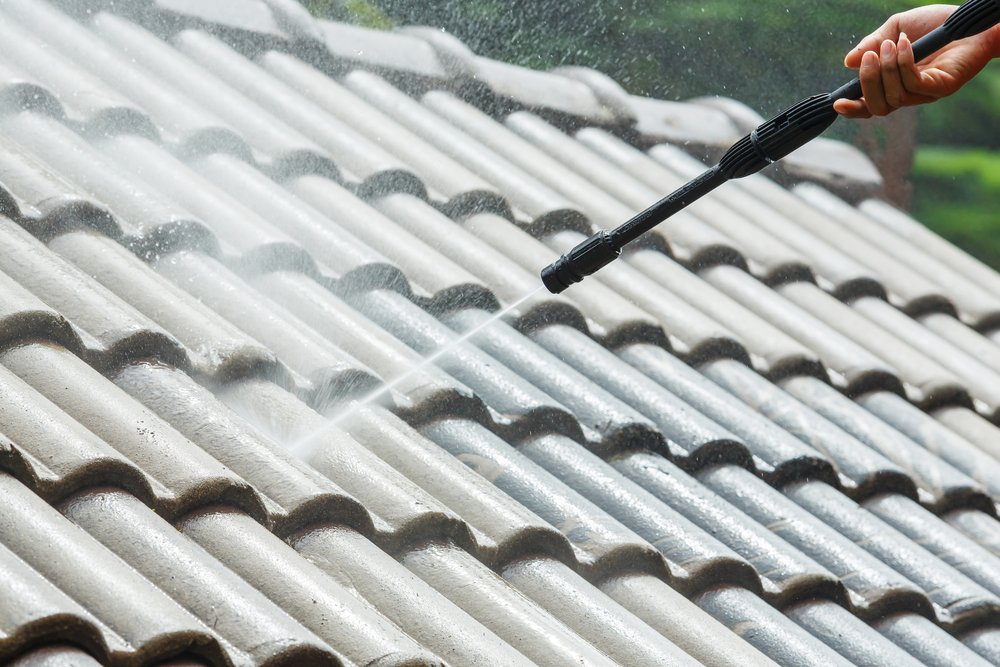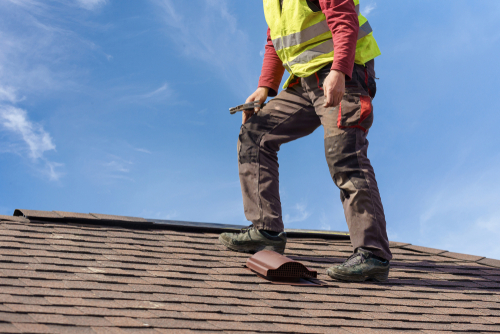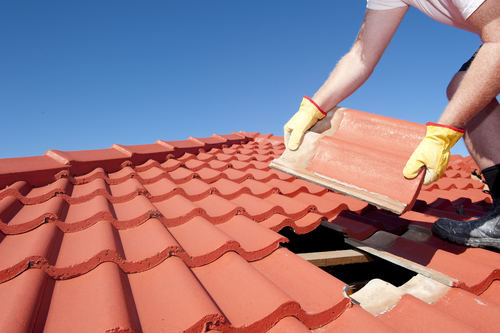The roof is one of the most, if not the very most important aspect of a house. A roof is intended to not only protect the occupants from bad weather, but the house itself as well. Leaky roofing can mean costly damage to flooring, ceilings, or walls. Even a small leak can snowball into a large problem if not taken care of as quickly as possible.
Maintained correctly, a roof can last multiple decades. Having said that, the exact lifespan of a roof is likely to depend on whether or not it has been maintained correctly. That’s why we’ve put together this guide to help you out.
First, let’s start with some definitions.
Commercial Roofing
Commercial roofs are generally used to protect larger, commercial structures. They tend to be flat and require consistent maintenance and repair. Unlike smaller residential roofs, repairs tend to be a much larger task for commercial roofs.
If you’re having a hard time finding a roofing contractor for your business, don’t forget to reach out to us here at Austermiller Roofing. We’ve got a team of roofing experts that are great at what they do and are more than ready to give your business a helping hand.
Residential Roofing
Residential roofs, on the other hand, are used to protect homes from the outside elements. These come in a variety of shapes and typically have more angles and slopes. Although these roofs also require maintenance, they are generally easier to inspect and repair.
Roof Maintenance
Now let’s talk about how to take care of your roof. Remember that doing due diligence in the short term can save you a lot of money down the road. After all, it’s much easier to fix a small leak before it causes mold growth.
Roof Inspections
The National Roofing Contractors Association recommends getting your roof inspected at least twice per year. Having said that, some other sources, such as Allstate recommend just once per year as the minimum.
Keep in mind, however, that these are just the regular annual or bi-annual inspections. You may want to get your roof inspected more often if you live in a particularly stormy region, or generally after major weather events.
In terms of the roof inspection itself, you do have a couple of options.
Professional Roof Inspection
Your first, and probably the best option, is getting a professional roof inspection. With this option, the contractors are able to climb onto the roof and inspect it for anything that may need to be repaired.
Roof Inspection Cost
According to HomeAdvisor, the average professional roof inspection can cost anywhere in the range of $120 – $321. Keep in mind, however, that this range only applies to residential roofs. Commercial roof inspections can clock in closer to $200 – $500, if not more.
This price tag does depend on a variety of factors, however. The size of your roof, as well as the roofing company that you hire, may make a big difference in the price tag.
DIY Roof Inspection
The cheaper option for roof inspections is to DIY it. Here are some key things to look for:
- Piles of leaves, algae, or moss. All of these things can trap water and eventually lead to water leaking underneath shingles.
- Damaged, warped, or missing shingles. Damaged shingles need to be replaced as soon as possible, else you’ll have gaps in your roof’s protective barrier. Rainwater could then leak through these gaps and get into your home, causing significant damage.
- Moisture in your attic. If you spot wet or moist spots in your attic, chances are that you already have a leaky roof and should get it fixed ASAP.
- Damaged or eroded roof flashing. Roof flashing protects vulnerable spots in your roof. As a result, leaving these key spots without protection means a very high likelihood of water seeping through. For example, chimneys are one of the most common places to install flashing.
- Damaged gutters or rubber boots. In short, anything that protects your roof from pooling water needs to be checked out and replaced if found to be damaged.
- Overhanging trees. Although trees can make a great addition to your backyard, they can also cause some damage to your home. During storms, tree limbs can easily break off and fall on your roof, causing significant damage. That’s why it’s always a good idea to cut down overhanging tree limbs.
Please note, however, that a DIY roof inspection may not be quite as thorough as a professional one. If you do choose to go this route, make sure to have a professional one done at least every few years. Additionally, please keep in mind that climbing onto your roof may not be safe, and could lead to possible injuries, so we don’t recommend doing so.
Roof Cleaning
Another part of roof maintenance that you may want to consider is roof cleaning. Although it may not seem like a roof is something that needs to be washed – it actually does! A thorough roof cleaning can wash off all the debris and algae stuck to your roof, improving its appearance. Aside from that, however, a roof cleaning also gets rid of harmful algae that can weaken your shingles over time.
Roof Shingles
Generally speaking, roof shingles are those small tile-looking things that cover your roof. They overlap and angle, causing water to run down and away from the roof. They’re very important to your roof’s health since they’re the first line of defense against potential water leaks.
Roof shingles need to be replaced as soon as possible if you notice one damaged or missing. To get a roof shingle replaced, simply contact a professional roofing contractor.
Roof Flashing
In case you’ve never seen it, roof flashing is sheets of metal (or occasionally a different material), that are used to cover at-risk parts of your roof. For example, chimneys are a very commonplace to use flashing because the area where the chimney connects to the roof can leave small gaps for water to leak through.
Roof Repair
If you notice anything off with your roof (missing or damaged shingles, flashing, gutters, etc…), it’s better to contact a roofing company sooner rather than later. Keep in mind that holding off on repairs can prolong the damage and end up costing you more down the road. Feel free to reach out to Austermiller Roofing for all of your roofing repairs.
Roof Replacement
According to Angi.com, the typical cost of a roof replacement clocks in at the $8,700 to $22,000 range. Needless to say, that’s a lot of dough. So most of the time, if your roof is in generally good shape, you might opt to simply replace the damaged shingles, rather than replacing the whole roof.
Having said that, full replacement is a better option in some cases. If the roof is old or structurally unsound all-around, it may be time to get a full roof replacement. For reference, Roof Advisor recommends replacing asphalt shingle roofs every “15-30 years”.
Looking For A Roofing Expert In Tennessee?
Austermiller Roofing is more than happy to give you a hand with all of your roofing needs. We offer FREE estimates and a fantastic team of roofing experts. Unlike other roofing companies, we care about clients and treat them as if they were our own family. We understand the importance of a good roof over your head, and that’s exactly why our work is of such a high standard. Whether you live in Nashville, Franklin, Mt Juliet, or elsewhere in the Tennessee area, we’re the roofing company for you!
Austermiller Roofing offers a variety of services such as roof repair and replacement, roof leak repair, mold detection and removal, and much more. So if you have a roofing concern, don’t hesitate to give us a call or fill out our online form – we’ll get back to you as soon as we can.
In the meantime, feel free to browse our website and get to know our team, as well as some answers to commonly asked questions.



